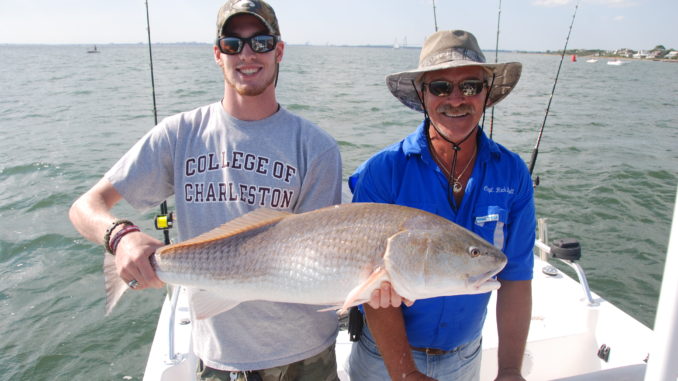
The S.C. Marine Resources Center at Fort Johnson supports several state and federal research facilities on a modern campus that is largely maintained by the S.C. Department of Natural Resources.
SCDNR employees have been sampling the adult red drum population since 1994, using bottom long-line gear, with research primarily conducted at sites around Charleston Harbor and nearshore live bottom areas.
The project’s goal project is to gather information on stock structure, migratory behavior and movement of sub-adults to the adult population in order to evaluate the effectiveness of stock enhancement and changes in fisheries regulations.
The sub-adult red drum becomes part of the adult population at an age of three to five years. The movement of these sub-adults to the adult population allows the adult population to maintain a healthy age structure, with many age classes represented. The number of fish moving to the adult population can be manipulated by making changes in the fisheries regulations; the more restrictive the regulations, the more sub-adults that will be allowed to reach spawning age.
The red drum’s maximum life span has been estimated to reach 40 to 50 years along the Southeastern coast. The adult population inhabits coastal to offshore waters and exhibits an inshore to offshore migratory pattern, moving offshore in the fall and winter and returning into the lower reaches of the bays and sounds in the spring and summer to spawn.





Be the first to comment